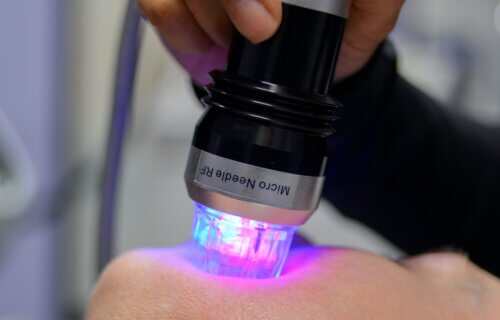CAMDEN, N.J. — Scars can be an ugly reminder of a serious or traumatic surgical experience, but a recent study hopes to get rid of unwanted surgical reminders for good. Research shows that using a procedure called microneedling can treat scarring, especially if done six to seven after surgery.
Microneedling, or “minimally invasive percutaneous collagen induction” is a non-surgical technique used to make skin more presentable. It’s often used to get rid of acne scars. The procedure requires numbing the skin where a power handpiece with needles of different sizes comes in and creates tiny channels in a person’s skin. By forming microchannels in the skin, it stimulates the body’s healing factors such as collagen and elastin.
The timing for microneedling goes against traditional recommendations to delay scarring treatments up to a year after surgery. The reason is to allow the scar to fully mature before manipulating the skin.
The researchers enrolled 25 women with surgical scars after having plastic or skin surgery such as benign lesion removal, facelift, or tummy tuck. Microneedling took place between six and 16 weeks after surgery. The second and third microneedling treatments were done four to eight weeks later. Researchers then used three different standardized assessments to measure how the treatment worked with scar appearance.

Patients showed a significant improvement in how their scars looked after the microneedling procedure. One of the assessments rates a scar from 1 to 60 with lower scores meaning a barely visible appearance. The average score before microneedling was 23.7 but two months after the last treatment the number decreased to 11.7.
The team also compared how long it took for microneedling to take effect. They measured the acne scars six to seven weeks after surgery and then at 13 to 16 weeks. Those who received the microneedling procedure at six to seven weeks showed better results: scores plunged from 16.8 to 8.1—compared to people who got the treatment a few weeks later. The outcomes were similar despite people being of different ages and those whose scars were in areas besides the face.
“While more research is needed to fully evaluate this finding, it certainly represents a significant paradigm shift in scar management,” wrote the study authors in their research. “Patients and surgeons interested in maximizing scar management may elect for early intervention with microneedling prior to the development of undesirable scars as a matter of preventative care.”
The findings suggest that the standard advice to delay treatment is outdated. Instead, the results support doing microneedling when the scar is at the late proliferation/early maturation phase of healing. One reason why the study authors think this phase is critical is that it’s right before collagen production starts to decline from the healing process.
The study is published in Plastic and Reconstructive Surgery, the official journal of the American Society of Plastic Surgeons.
